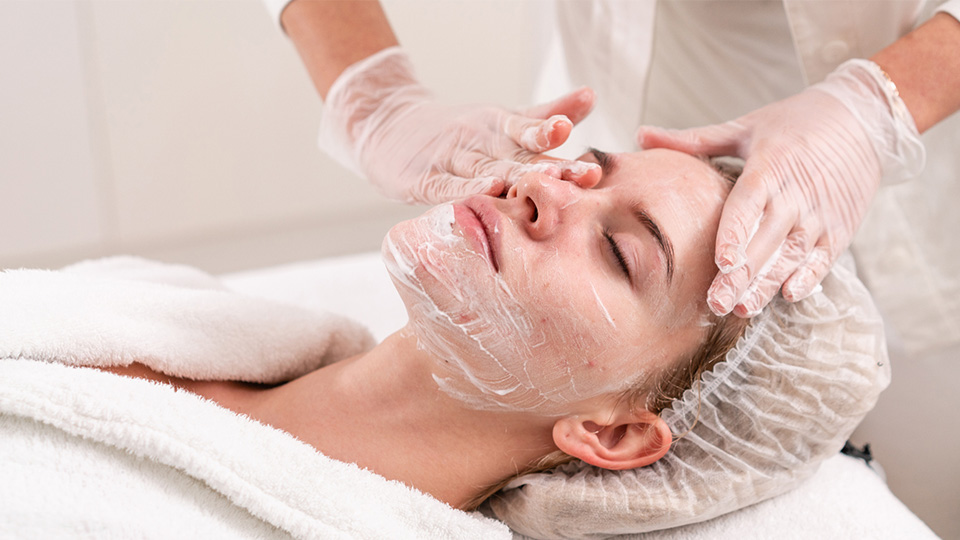Can Dermal Fillers Help with Acne Scars? Understanding the Benefits
- Get link
- Other Apps
Acne scars can be a persistent reminder of past breakouts, impacting both appearance and self-esteem. While various treatments are available, Dermal Fillers muscat have emerged as a promising solution for improving the appearance of acne scars. In this article, we’ll explore how dermal fillers work, their benefits, and what you need to know if you’re considering them as a treatment for acne scars.
What Are Dermal Fillers?
Dermal fillers are injectable substances used to restore volume and smooth out wrinkles and lines on the skin. They come in various types, including hyaluronic acid, calcium hydroxylapatite, and poly-L-lactic acid. These fillers are primarily used for facial volumization and contouring but have found a significant role in scar treatment.
How Do Dermal Fillers Help with Acne Scars?
Acne scars often result from the skin's attempt to heal after severe acne. These scars can be atrophic (depressed) or hypertrophic (raised). Dermal fillers are particularly effective for treating atrophic scars, which are sunken or pitted. Here’s how they work:
Restoring Volume: Atrophic scars occur when the skin loses collagen and elasticity. Dermal fillers can restore volume to these areas, making the scars less noticeable by raising the skin’s surface to the level of the surrounding skin.
Stimulating Collagen Production: Some fillers, like those containing poly-L-lactic acid, not only provide immediate volume but also stimulate the body’s natural collagen production. Increased collagen can improve skin texture over time, enhancing the overall appearance of scars.
Smoothening the Skin Surface: By filling in the depressions caused by acne scars, dermal fillers can help smooth out uneven skin surfaces, creating a more uniform appearance.
Benefits of Using Dermal Fillers for Acne Scars
Dermal fillers offer several benefits for individuals looking to improve the appearance of acne scars:
Minimal Downtime: One of the significant advantages of dermal fillers is the minimal downtime associated with the procedure. Most people can return to their regular activities immediately after treatment, making it a convenient option for those with busy schedules.
Immediate Results: Unlike some treatments that take weeks or months to show results, dermal fillers provide immediate improvements. You can see a noticeable difference right after the procedure.
Non-Surgical Solution: Dermal fillers are a non-invasive option compared to surgical scar revision techniques. This makes them appealing to those who prefer less invasive treatments.
Customizable Treatment: Dermal fillers come in various formulations and can be tailored to address specific scar types and individual needs. This customization ensures that you receive the most effective treatment for your unique skin condition.
Reversible Treatment: Some dermal fillers are made from hyaluronic acid, which is a substance naturally found in the skin. If necessary, hyaluronic acid fillers can be reversed with an enzyme called hyaluronidase, providing an added layer of safety and control.
What to Expect During the Procedure
If you’re considering dermal fillers for acne scars, it’s essential to know what to expect:
Consultation: The process begins with a consultation with a qualified dermatologist or cosmetic surgeon. During this visit, your provider will assess your acne scars, discuss your goals, and recommend the most suitable filler type and treatment plan.
Preparation: On the day of the procedure, your skin will be cleansed, and a topical numbing cream may be applied to minimize discomfort. Some fillers also contain lidocaine, a local anesthetic, to further enhance comfort during the injection.
Injection: The dermal filler is injected directly into the scar tissue using a fine needle. The provider will carefully place the filler to ensure even distribution and optimal results. The procedure typically takes about 30 minutes to an hour, depending on the number of areas treated.
Post-Treatment Care: After the procedure, you may experience some swelling, redness, or bruising at the injection sites. These side effects are usually mild and subside within a few days. Your provider will offer post-treatment instructions, including avoiding strenuous activities and applying ice to reduce swelling.
Are There Any Risks or Side Effects?
While dermal fillers are generally safe, there are some potential risks and side effects to be aware of:
Allergic Reactions: Although rare, some individuals may have allergic reactions to the filler material. It’s important to discuss any allergies or sensitivities with your provider before the treatment.
Infection: As with any injectable procedure, there is a risk of infection. Ensuring that the procedure is performed in a sterile environment by a qualified professional minimizes this risk.
Uneven Results: In some cases, the filler may not be evenly distributed, leading to lumps or uneven texture. This can often be corrected with follow-up treatments.
Temporary Side Effects: Common side effects include swelling, redness, and bruising. These typically resolve within a few days but can be managed with cold compresses and over-the-counter pain relief if needed.
How Long Do Results Last?
The longevity of dermal filler results varies depending on the type of filler used, the area treated, and individual factors. On average, hyaluronic acid fillers last between six to twelve months, while other types like poly-L-lactic acid can last up to two years. Your provider will help you understand the expected duration of results based on your specific treatment plan.
Is It the Right Treatment for You?
Dermal fillers can be an excellent option for improving the appearance of acne scars, but they may not be suitable for everyone. It’s essential to have a thorough consultation with a qualified professional who can assess your skin condition, discuss your goals, and recommend the best treatment approach.
If you have active acne or significant skin concerns, your provider may recommend addressing these issues before considering dermal fillers. Additionally, combining dermal fillers with other treatments like laser therapy or microneedling may enhance overall results and address a broader range of skin concerns.
Conclusion
Dermal fillers offer a promising solution for individuals seeking to improve the appearance of acne scars. With their ability to restore volume, stimulate collagen production, and provide immediate results, they represent a valuable tool in the quest for smoother, more even skin. By understanding how dermal fillers work and what to expect, you can make an informed decision about whether this treatment is right for you. Always consult with a qualified professional to determine the best approach to achieve your skincare goals.
- Get link
- Other Apps
.jpg)



Comments
Post a Comment